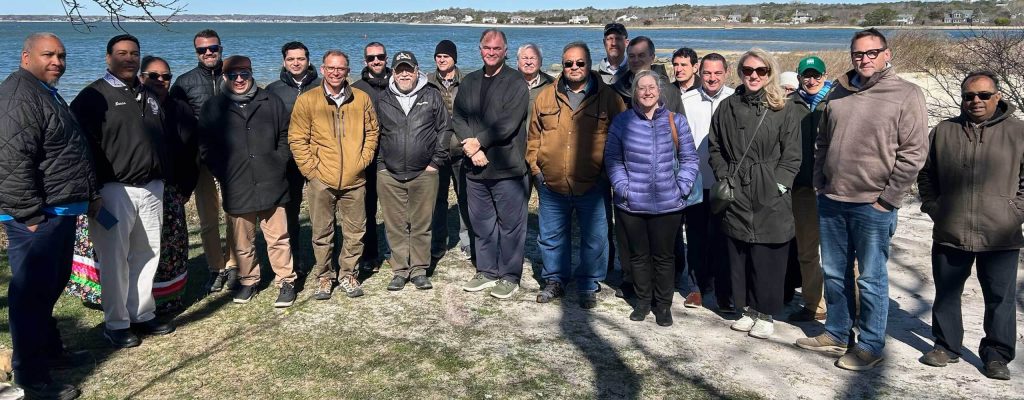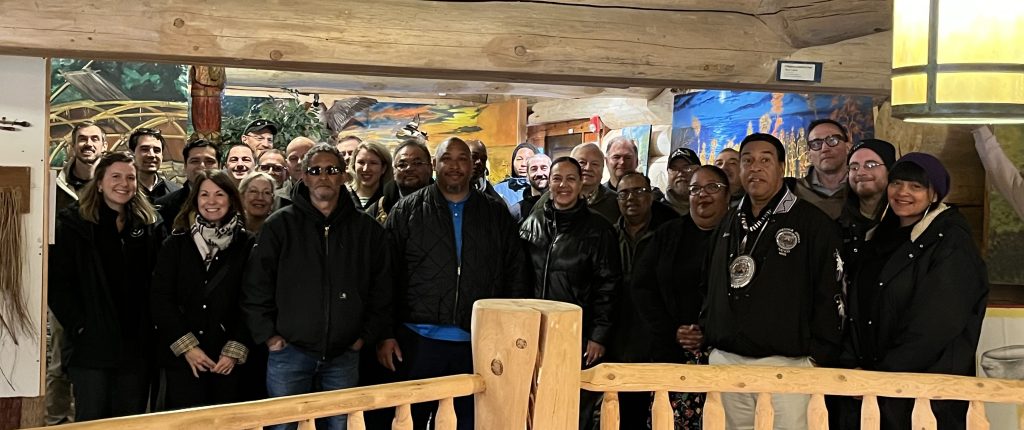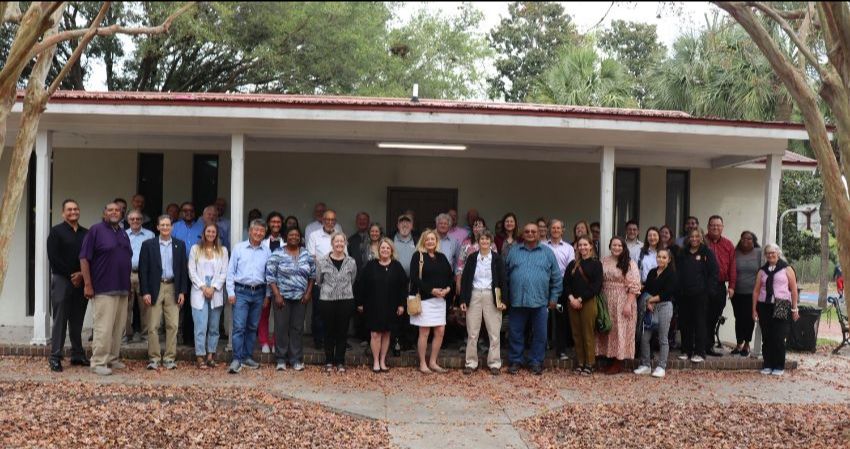
In April, members of the E-Enterprise for the Environment Leadership Council (EELC) gathered for their 2025 Spring Meeting in Southampton, New York hosted by the Shinnecock Indian Nation. Wide-ranging conversations centered on improving the delivery of environmental protection through permit modernization, data preparedness, technological innovation, continuous improvement, and collaborative decision-making. Leading the conversations were EPA Chief of Staff Eric Amidon, proxy for EELC Federal Co-Chair and EPA Associate Deputy Administrator Travis Voyles; EELC State Co-Chair and ECOS Vice President Chris Wells of Mississippi; and EELC Tribal Co-Chair Jerry Cain of the Mississippi Band of Choctaw Indians.
EELC meetings support pillars of EPA’s Powering the Great American Comeback Initiative – Pillar 1: Clean Air, Land, and Water for Every American; Pillar 3: Permitting Reform, Cooperative Federalism, and Cross-Agency Partnership; and Pillar 4: Make the United States the Artificial Intelligence Capital of the World. These meetings also ensure early and meaningful engagement with states and Tribes to collaboratively modernize the business of environmental protection.
Among other timely topics, EELC members considered state-of-the-art applications of artificial intelligence (AI) for disaster preparedness and resilience, including the development of training scenarios and review of images for potential hazards. Massachusetts shared ways in which technology has helped its wetlands management program to prevent and identify wetlands loss. North Carolina presented its work to efficiently manage increasing demand and costs associated with public records requests. In addition, South Carolina highlighted efforts to streamline its permitting processes to meet the Governor’s ambitious goals for permit issuance. Members identified follow-up ideas to consider, including how AI might be leveraged to complete rote tasks, develop a first draft of permits, and complete permit application completeness reviews.
Separately, the EPA Office of Planning & Performance spoke to the benefits of using continuous process improvement tools, noting that EPA provides these Lean services to states and Tribes at no-cost.

Another meeting highlight was exploration of the local community’s environmental projects, providing a unique view of how cross-sector collaboration can drive change in areas like water restoration and land remediation. Tribal leaders welcomed the EELC for a tour of the Shinnecock Museum before members toured a brownfields site at a former oyster hatchery and viewed a coastal beach resilience project, followed by a presentation at the Stony Brook Marine Center Lab. Southampton Mayor William Manger provided insights into the Lake Agawam remediation plan, a cross-agency effort supported by the EPA, the State of New York, and the local community that will use innovative algal harvesting technology to mitigate harmful algal blooms and improve water quality.





